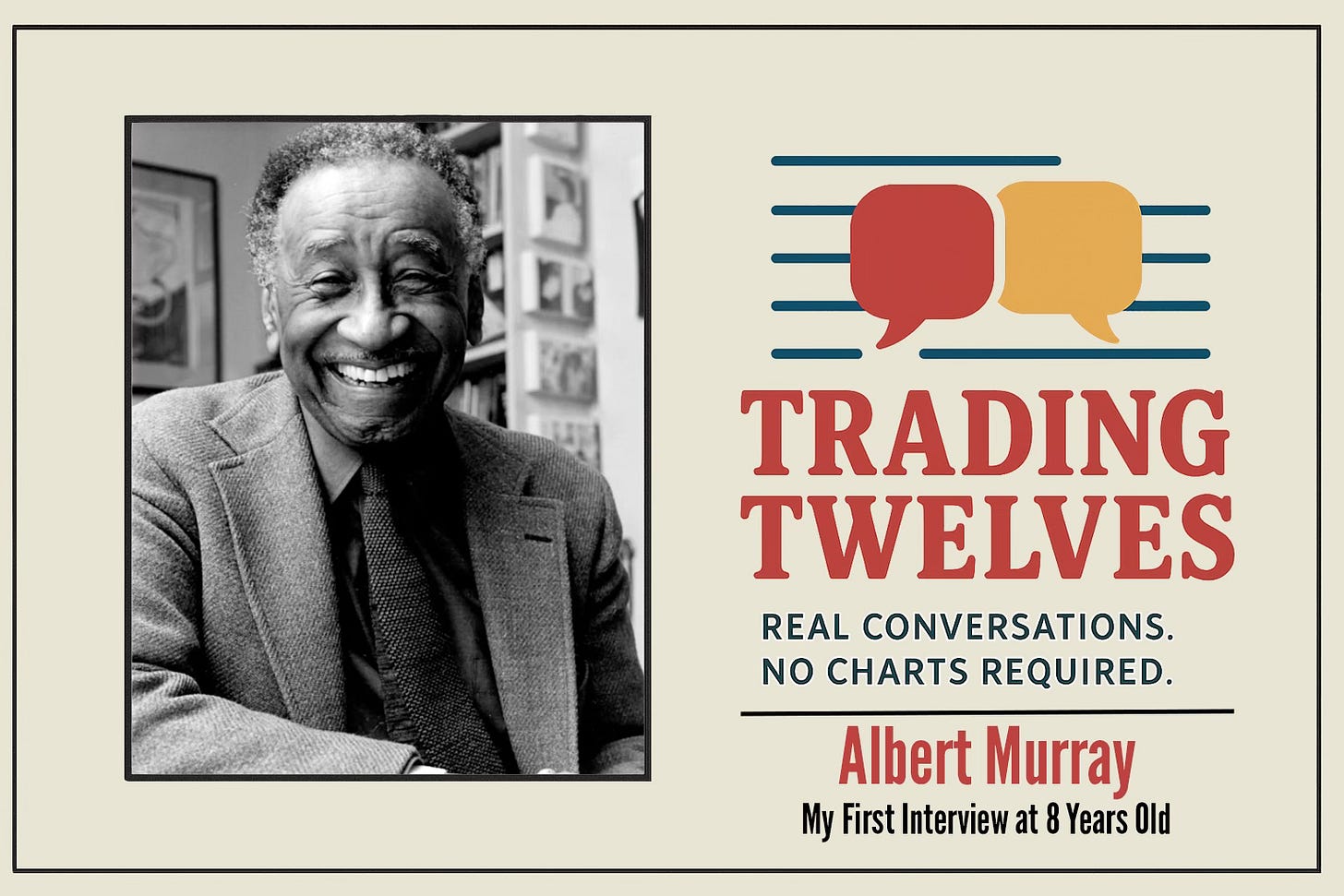In 2001, I was afforded the opportunity to interview the great writer and cultural critic Albert Murray for what started as a humble elementary school assignment. It was for Mrs. Fesken’s third grade class at PS 16 in Jersey City, NJ, and the topic was the Harlem Renaissance.
Thanks to my father, that project became the interview of a lifetime.
At the time, I didn’t fully grasp the weight of the moment. But as I’ve grown, read Murray's writings, and come to understand how intellectually foundational he was—not just to my upbringing but to many of my mentors—I’ve become deeply thankful to my dad for giving me that opportunity so early in life.
Nearly 25 years later, having Mr. Murray as a featured interview in a series that borrows its name from one of his books - Trading Twelves - feels like a full-circle moment I could never have imagined.
Albert Murray Select Bibliography
Stomping the Blues (1989)
Publisher: Da Capo Press
A brilliant exploration of the blues as an art form, philosophy, and cultural foundation of American identity.The Omni-Americans: Black Experience and American Culture (1990)
Publisher: Da Capo Press
One of Murray’s most iconic work—an argument against reductive racial binaries and for a more complex view of American identity.South to a Very Old Place (1991)
Publisher: Vintage / Knopf Doubleday
A lyrical travel memoir that reflects on the South and its cultural complexity through the lens of Black experience.The Hero and the Blues (1996)
Publisher: Vintage / Knopf Doubleday
A philosophical exploration of the artist as hero, rooted in both classical theory and blues idioms.The Blue Devils of Nada (1997)
Publisher: Vintage
A dynamic meditation on art, aesthetics, and American culture from a uniquely Murray perspective.Trading Twelves: The Selected Letters of Ralph Ellison and Albert Murray (2000)
Publisher: Vintage
An extraordinary collection of correspondence between two towering minds of American letters, full of wit, friendship, and cultural critique. This is the namesake for my interview series—and a book that shaped my understanding of dialogue and depth in the arts.



